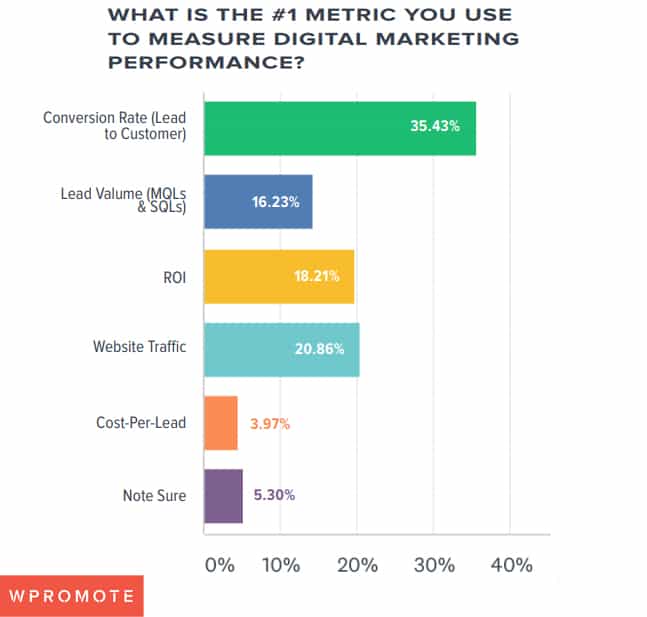What are digital metrics?
Digital metrics, often referred to as key performance indicators (KPIs), are values commonly used by marketers to measure and track the performance of their campaigns. These quantifiable values help companies understand what consumers are doing online, why they’re doing it, and how this behavior can be converted into digital marketing campaigns. It deciphers whether or not a marketer’s efforts are having a positive impact.
Important Metrics –
Revenue is the most important KPI for marketing teams. For marketers, all KPIs should lead to revenue, even if your primary focus is on MQLs or website traffic. Revenue is the primary metric, but most marketers will also have a few KPI’s, like return on ad spend or customer acquisition cost, that measure the levels behind revenue growth.
Revenue provides insight into the income generated across different revenue streams, which is a quick way to look at the high-performing and under-performing parts of the business. If marketing isn’t generating revenue, it may be time to re-evaluate your KPIs.

(Davis, 2022)
Digital marketing for Ecommerce
Shopping cart abandonment rate –
The Shopping Cart Abandonment Rate is the percentage of online shoppers who add items to a virtual shopping cart but then abandon it before completing the purchase. It shows the rate of interested potential customers who leave without buying anything compared to the total number of shopping carts created.
Marketing that is used in this scenario would be abandonment emails, these are emails that get sent to the customer to remind them that they have left items in their cart. According to, (Carl Sednaoui,2021), the average person gets interrupted once every eight minutes, the average employee gets interrupted fifty sic times a day, this kind of marketing can recover up to 5% to 11% of lost sales for a company.
Sales conversion rate –
More conversions mean more revenue, this means that measuring your overall sales conversion rate is critical. Out of all customers that visit your site, how many are clicking through to make a purchase?
Measuring “mini-conversions” such as moving from home or category pages to specific product pages can also be helpful, which indicates a positive customer inertia toward sales conversion.
Approval Rate –
The goal of monitoring your approval rate is determining how many positive interactions followers have had with your posts. These might include likes, shares, re-shares, or even sales conversions, and they can ensure your marketing campaign is on the right track.
Average order value –
Calculating your average order value can be helpful. You can find it by dividing total sales value by number of carts, the higher the number, the better. Then, look for ways to increase average order value, such as offering add-on items, bundle discounts, or even free shipping.
The more metrics you track, the better your understanding of your customer journey. Having access to this information and knowing what to do with it provides significant benefits that impact your overall business goals.






